Share
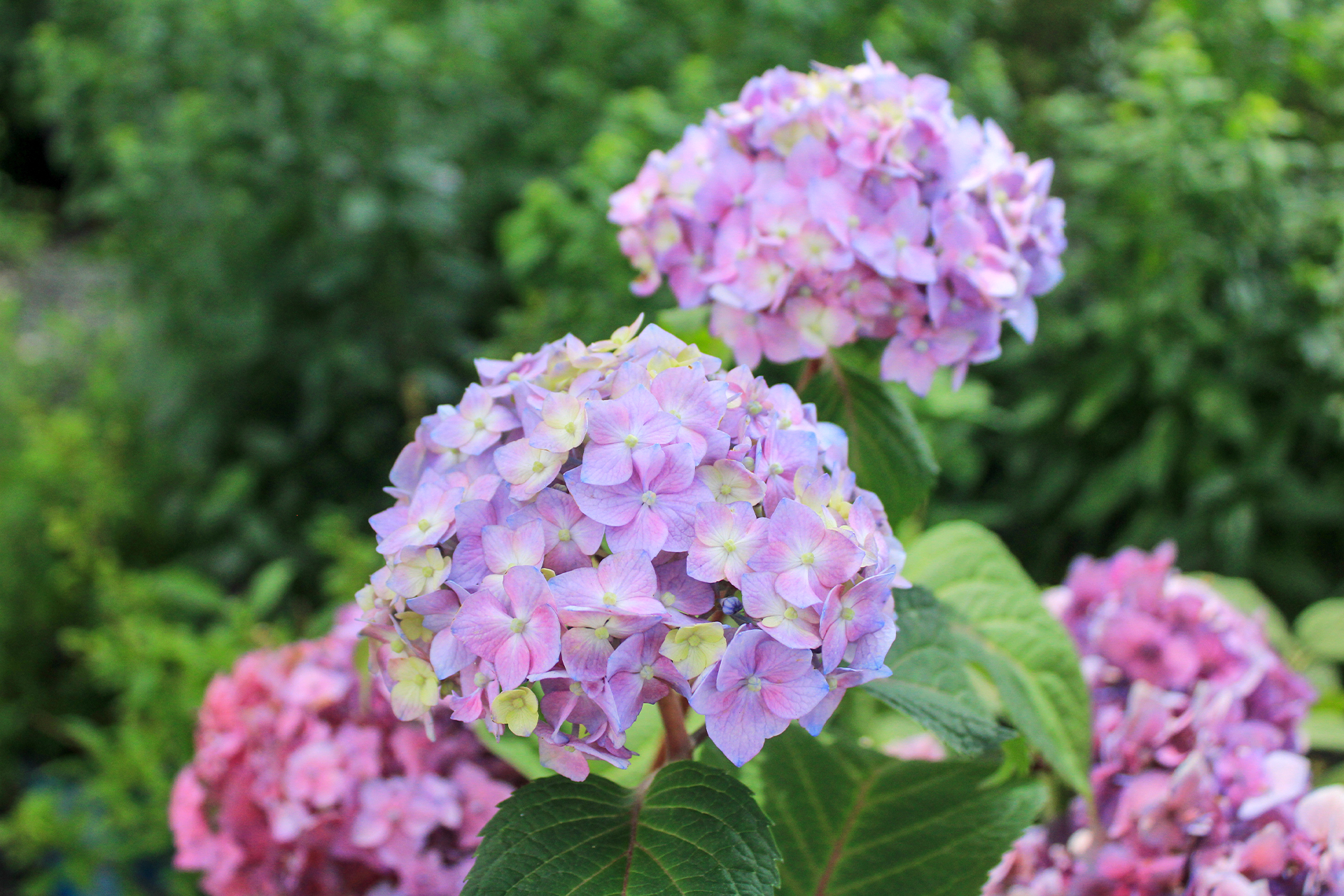
Hydrangeas in the Hy-Desert
Hydrangeas are beloved for their stunning blooms and relatively easy maintenance, making them a favorite among gardeners. There are two primary classes of hydrangeas, each with its own unique characteristics and care requirements: Hydrangea macrophylla and Hydrangea paniculata.
Hydrangea Macrophylla: Big Blooms and Colorful Variations
Hydrangea macrophylla, commonly known as bigleaf hydrangea, is characterized by its large, round bloom clusters. Here’s what you need to know about this variety:
- Bloom Characteristics: Bigleaf hydrangeas produce large, showy blooms that can vary in color from blue to pink or even purple. Interestingly, the color of the blooms is influenced by the soil pH. Acidic soil tends to produce blue flowers, while alkaline soil results in pink flowers. You can adjust the soil pH to manipulate the bloom color.
- Pruning Requirements: Unlike some other varieties, bigleaf hydrangeas do not typically require annual pruning. However, removing dead or damaged wood and light shaping after flowering can help maintain their shape and encourage new growth.
- Growing Conditions: Hydrangea macrophylla thrives in partially shaded areas, particularly where they can receive morning sun and some protection from the intense afternoon heat. They prefer moist, well-drained soil that is rich in organic matter.
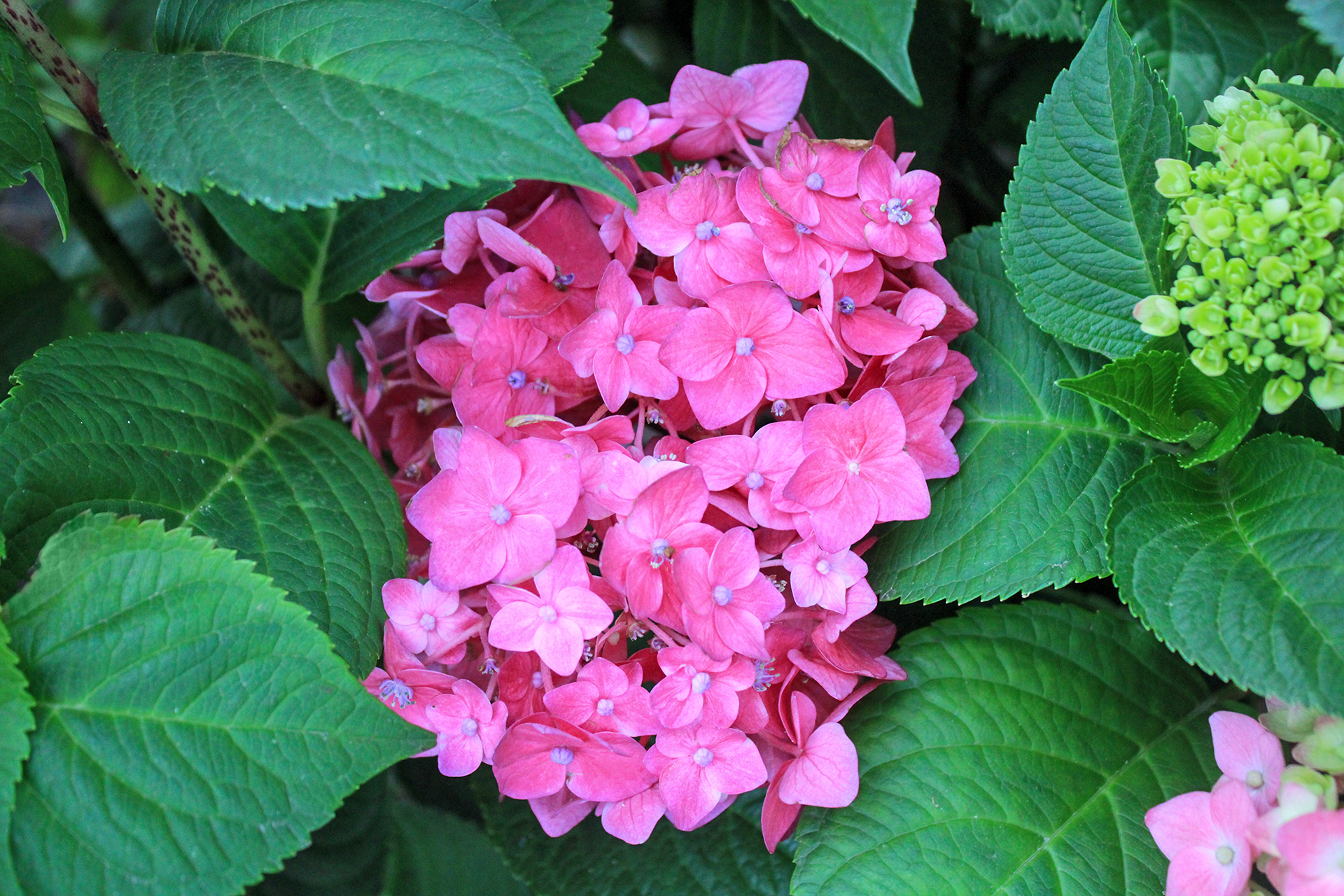
Hydrangea Paniculata: Conical Blooms and Color Evolution
Hydrangea paniculata, also known as panicle hydrangea, offers a different appeal with its cone-shaped blooms and changing colors throughout its bloom cycle:
- Bloom Characteristics: Panicle hydrangeas start their bloom cycle with creamy white flowers that gradually turn pink as they mature. Unlike bigleaf hydrangeas, the color change in panicle hydrangeas is a genetic trait and is not affected by soil pH.
- Pruning Requirements: These hydrangeas benefit from annual pruning to encourage new growth and maintain a healthy shape. Prune them in late winter or early spring before new growth begins.
- Growing Conditions: Panicle hydrangeas are more tolerant of full sun compared to other hydrangea varieties, though they still appreciate some shade during the hottest parts of the day. They prefer well-drained soil and, like their counterparts, benefit from annual top dressing with acid planting mix and soil aeration to ensure optimal growth.
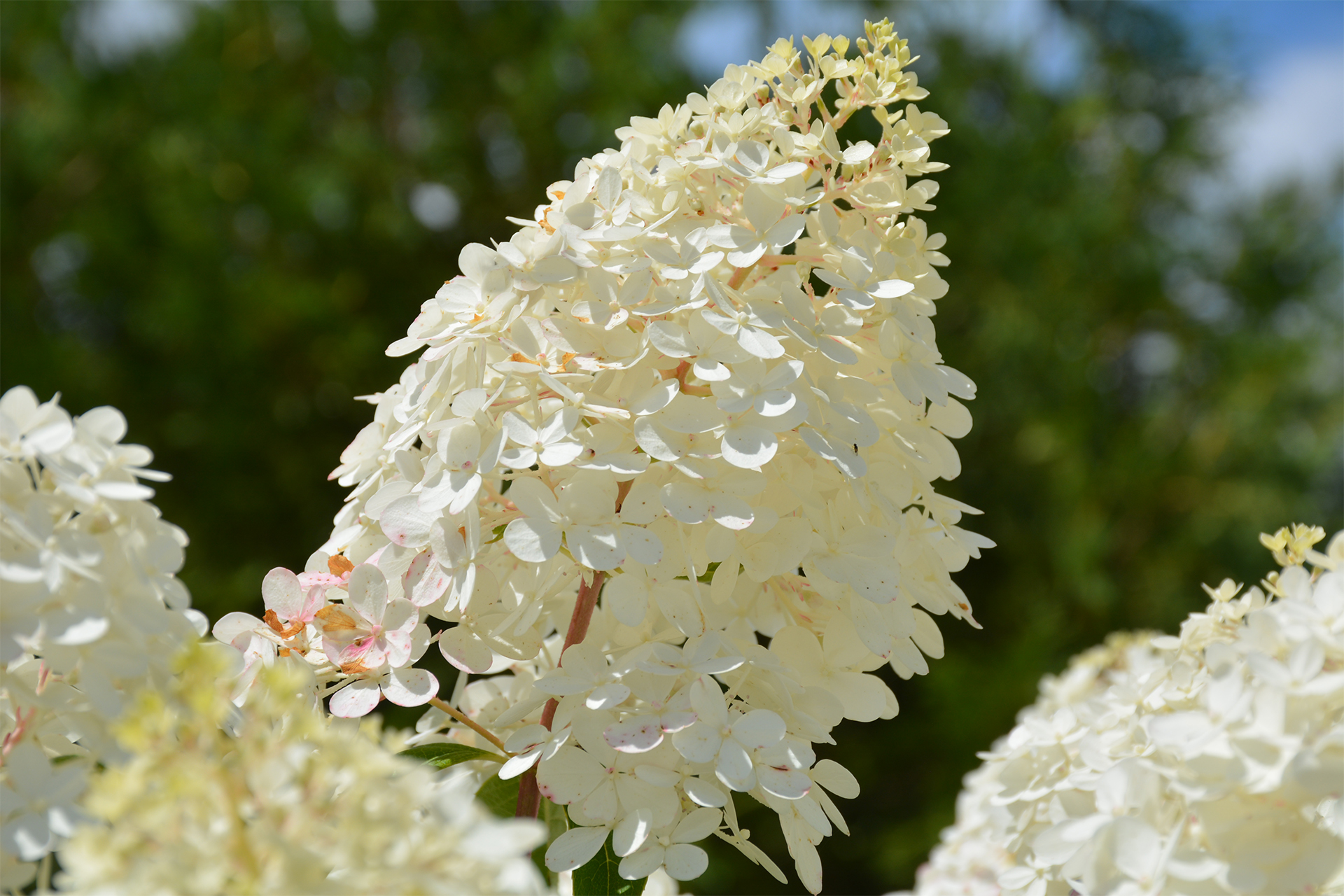
General Care Tips for Hydrangeas
Regardless of the variety, hydrangeas share some common care needs:
- Soil and Fertilization: Hydrangeas thrive in acidic soil with a pH between 5.5 and 6.5. Regularly testing and adjusting the soil pH as needed will help ensure vibrant blooms.
- Watering: Keep hydrangeas well-watered, especially during hot, dry periods. They prefer consistently moist soil but not waterlogged conditions.
- Protection from Elements: Protect hydrangeas from harsh afternoon sun by planting them where they receive morning sunlight or partial shade. Mulching around the base of the plant helps retain moisture and regulates soil temperature.
- Annual Maintenance: Consider annual top dressing with acid planting mix and periodic soil aeration to promote healthy root development and overall plant vigor.
Hydrangeas are not only beautiful additions to any garden but also relatively low-maintenance, rewarding gardeners with their lush foliage and gorgeous blooms. By understanding the specific needs of each hydrangea variety, you can ensure they thrive and continue to enchant with their seasonal displays year after year.
Share

The Sun Valley Red Maple is not just another tree—it's a resilient, seasonal beauty that thrives in the high desert, offering you years of color and grace in your landscape.

Whether you’re looking to enhance your garden with a striking ornamental tree or want a compact, resilient option for smaller spaces, the Snowdrift Flowering Crabapple tree is a fantastic addition to your landscape.
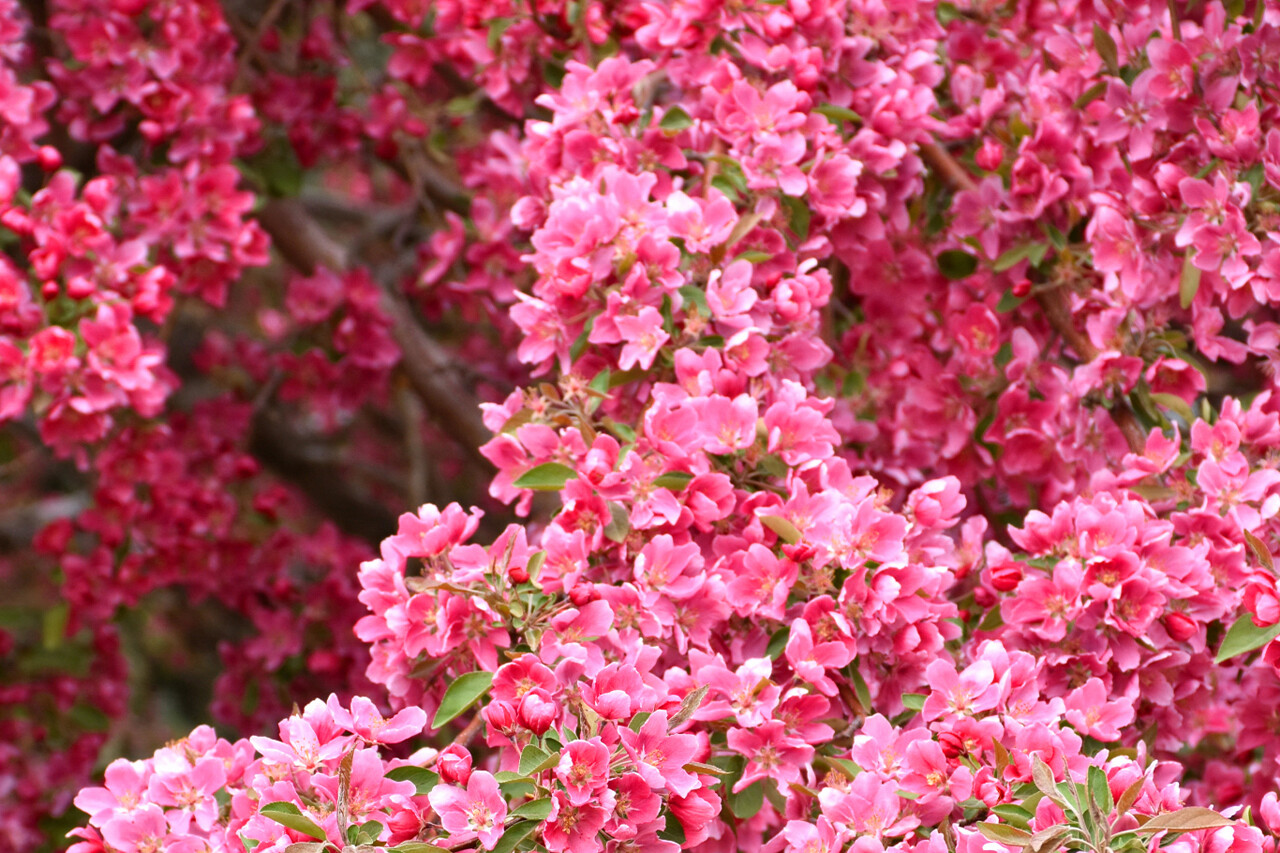
Whether you're planting in a small yard or looking to enhance your landscape with a versatile, low-maintenance tree, the Prairifire Flowering Crabapple tree is a perfect choice for the high desert.
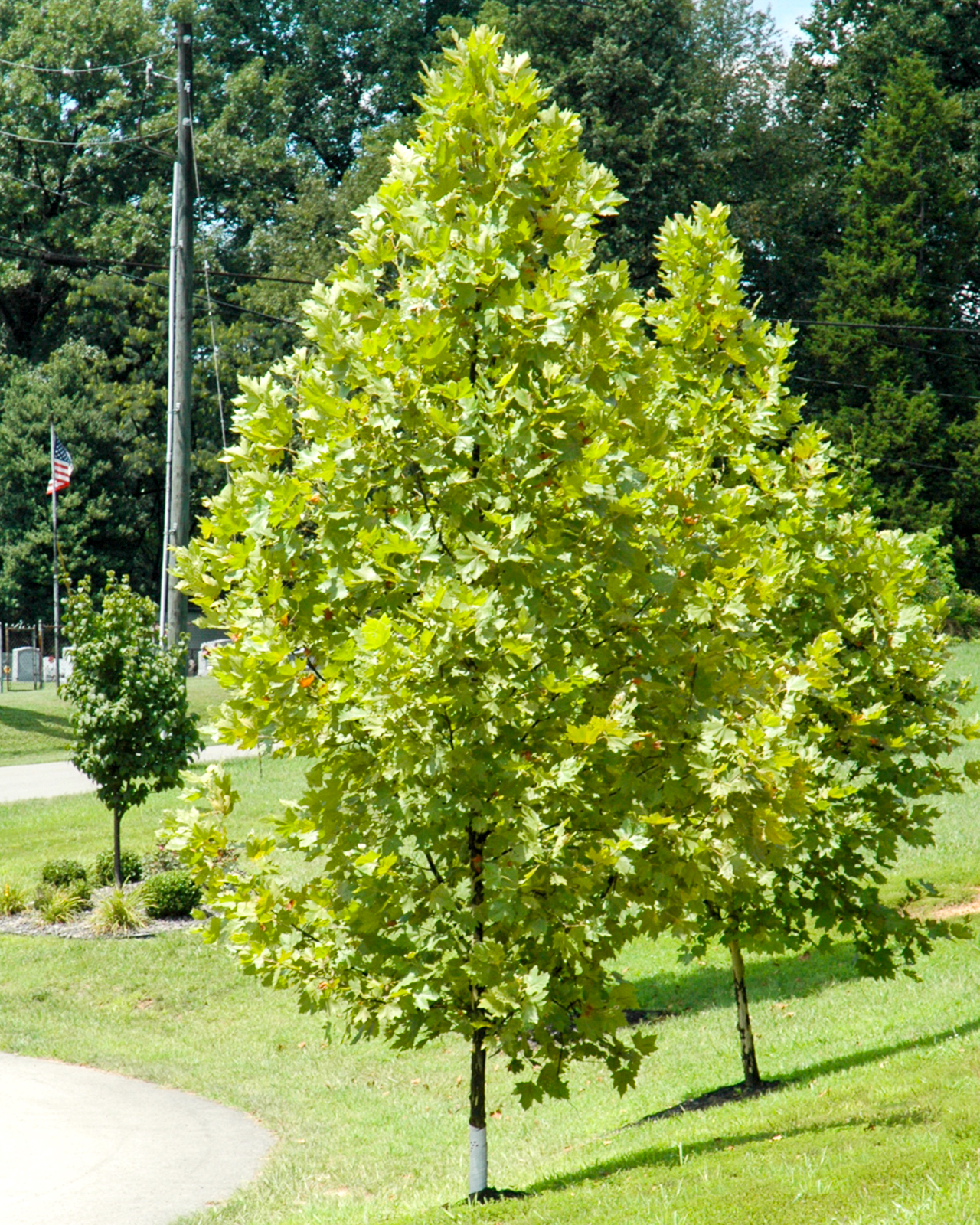
Whether you’re looking to add shade to your landscape or create a striking focal point, the Exclamation! London Planetree is a perfect addition to your garden.
